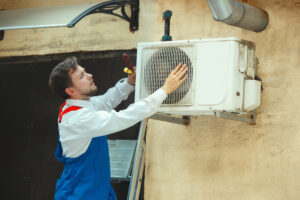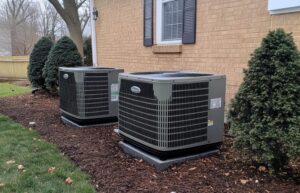The HVAC industry is undergoing significant changes with the upcoming phase-out of R-32 and R-54B refrigerants. These refrigerants have been common in heating, ventilation, and air conditioning systems for years. However, due to environmental concerns and regulatory shifts, they are being replaced by more eco-friendly alternatives.
R-32 and R-54B have been essential in home and commercial cooling systems. Understanding what these changes mean for your HVAC system is crucial. How will your current system be affected? What are the benefits of the new refrigerants? Are there any costs involved in transitioning? These are important questions to consider as we navigate through this shift.
Background on the Current Refrigerants
R-32 and R-54B have been widely used in HVAC systems for many years. R-32 is a common refrigerant for residential air conditioning, known for its efficiency and relatively lower environmental impact than some older refrigerants. R-54B, on the other hand, is often used in commercial systems, providing reliable performance in more demanding environments.
However, both refrigerants have a high global warming potential (GWP). This means they contribute significantly to greenhouse gas emissions if leaked into the atmosphere. Due to increasing environmental concerns and international agreements aimed at reducing the impact of climate change, these refrigerants are being phased out in favor of more sustainable options.
The phase-out is mandated by various environmental regulations worldwide. These regulations aim to mitigate the effects of climate change by reducing the use of high-GWP refrigerants. For HVAC system owners, this means that older systems using R-32 and R-54B will need to be retrofitted or replaced with systems that use newer refrigerants.
Introduction of the New Refrigerants
Several new refrigerants are emerging as replacements for R-32 and R-54B. Among the most notable are R-454B and R-32A. These new refrigerants have a much lower GWP, making them more environmentally friendly. They also offer improved efficiency and compatibility with existing HVAC systems, which makes the transition smoother for both residential and commercial applications.
R-454B is considered a suitable replacement for R-54B in commercial systems. It offers similar performance characteristics but with a significantly lower GWP. This makes it a preferred choice for businesses looking to comply with new environmental regulations while maintaining efficient cooling and heating.
R-32A, on the other hand, is an advanced version of R-32, designed to offer the same benefits but with an even lower environmental impact. This refrigerant provides excellent efficiency, meaning HVAC systems can operate more effectively while using less energy. Additionally, R-32A is compatible with many existing air conditioning systems, reducing the need for significant modifications during the transition.
Impact on Current Systems
The phase-out of R-32 and R-54B will have several implications for existing HVAC systems. First, system owners will need to consider the costs of transitioning to new refrigerants. This could involve retrofitting existing systems or replacing them entirely. While retrofitting can be less expensive, it may not always be possible or advisable, depending on the age and condition of the current system.
Performance changes are another consideration. New refrigerants like R-454B and R-32A are more efficient, but they may require adjustments to your HVAC system to achieve optimal performance. Our professionals can assess your current setup and make the necessary modifications to ensure a seamless transition.
Maintenance routines will also change. New refrigerants may require different handling and storage protocols. Our technicians are trained to work with these new materials, ensuring that your system remains in compliance with all safety and regulatory standards. Regular maintenance visits will continue to be essential to keep your system running smoothly and efficiently.
Benefits of Transitioning
Transitioning to new refrigerants offers several key benefits. One of the most significant is the reduction in greenhouse gas emissions. Refrigerants like R-454B and R-32A have a much lower global warming potential compared to R-32 and R-54B. This makes them a more environmentally friendly option, contributing to global efforts to combat climate change.
Improved energy efficiency is another advantage. Newer refrigerants can make your HVAC system more efficient, leading to lower energy consumption. This can result in long-term savings on your energy bills. Enhanced system performance means your home or business will maintain a stable and comfortable climate more reliably.
Another benefit is regulatory compliance. Using approved refrigerants ensures that your system adheres to current environmental regulations. This not only keeps you on the right side of the law but also enhances the longevity and reliability of your system. By making the switch, you contribute to a more sustainable future while enjoying the practical benefits of reduced costs and improved performance.
Conclusion
Understanding the changes in refrigerant regulations and their impact on your HVAC system is crucial. The phase-out of R-32 and R-54B marks a significant shift towards more environmentally friendly and efficient options. By transitioning to newer refrigerants like R-454B and R-32A, you can enjoy benefits such as reduced greenhouse gas emissions, improved energy efficiency, and compliance with modern environmental standards.
Contact Volpe Service Company now for comprehensive HVAC services in Mt. Olive, and to learn more about how these refrigerant changes can benefit you. We are committed to helping you achieve a more efficient and environmentally friendly home or business!





